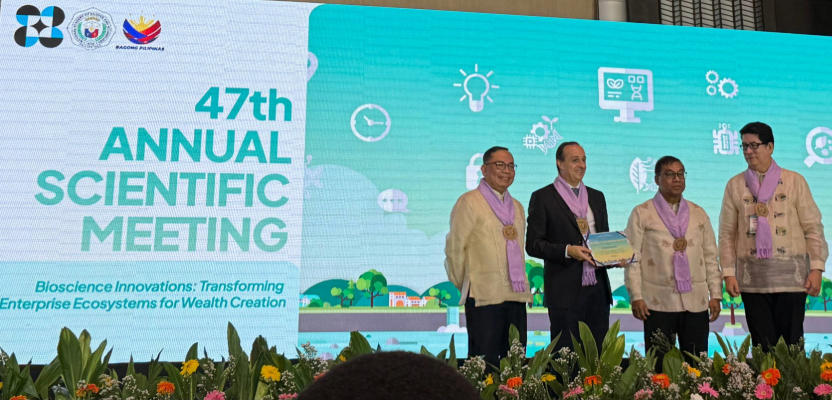
On 9 July in Manila, Australian Academy of Science Vice-President, Professor Ivan Marusic, delivered a keynote address at the 47th Annual Scientific Meeting of the National Academy of Science and Technology of the Philippines (NAST-PHL).
Professor Marusic's presentation, Bioscience Futures: Collaboration, Innovation and Impact in Australia and the Asia-Pacific, was warmly received, with strong interest in building deeper linkages between researchers, universities, academies and governments across the region.
He explored how collaborative models - spanning academia, industry and government - are driving advances in bioscience research. Several case studies highlighted the work of Academy Fellows, including Dr Evans Lagudah's team at CSIRO. Their research uses genetic solutions to improve cereal crop resistance to fungal pathogens, aiming to reduce chemical inputs and promote environmental and human health. A notable example is their collaboration with the International Rice Research Institute (IRRI) in the Philippines, where gene editing techniques were applied to replicate wheat resistance traits in rice, resulting in improved fungal resistance.
Professor Marusic also examined the transformative role of artificial intelligence, high-performance computing, and shared international infrastructure in enabling bioscience breakthroughs. He discussed Australia's bioscience education landscape and the future vision outlined in the Academy's Bioscience 2030 report, emphasising the need for future-ready education and workforce development to build resilient innovation ecosystems.
The presentation also introduced the Academy's new foresighting initiative, Australian Science, Australia's Future: Science 2035, which aims to measure and shape Australia's long-term science capability. This initiative has synergies with the Philippines' own foresight work, PAGTANAW 2050 (Looking Ahead 2050).
Professor Marusic's presentation provided an Australian perspective on how strategic foresight, investment in research infrastructure and regional collaboration can shape a thriving, innovation-led future for the Asia-Pacific.






